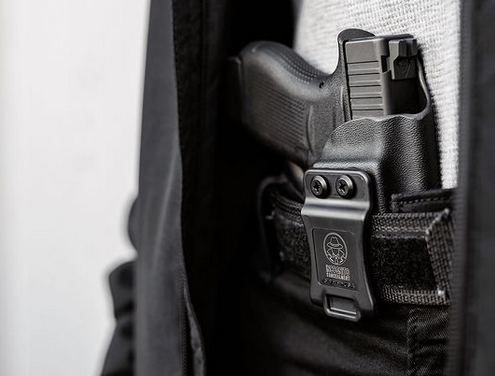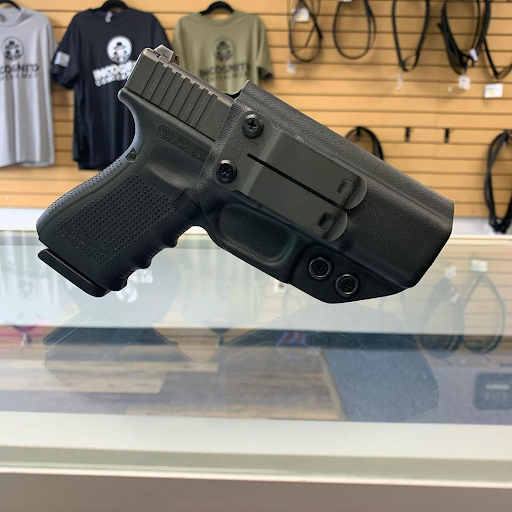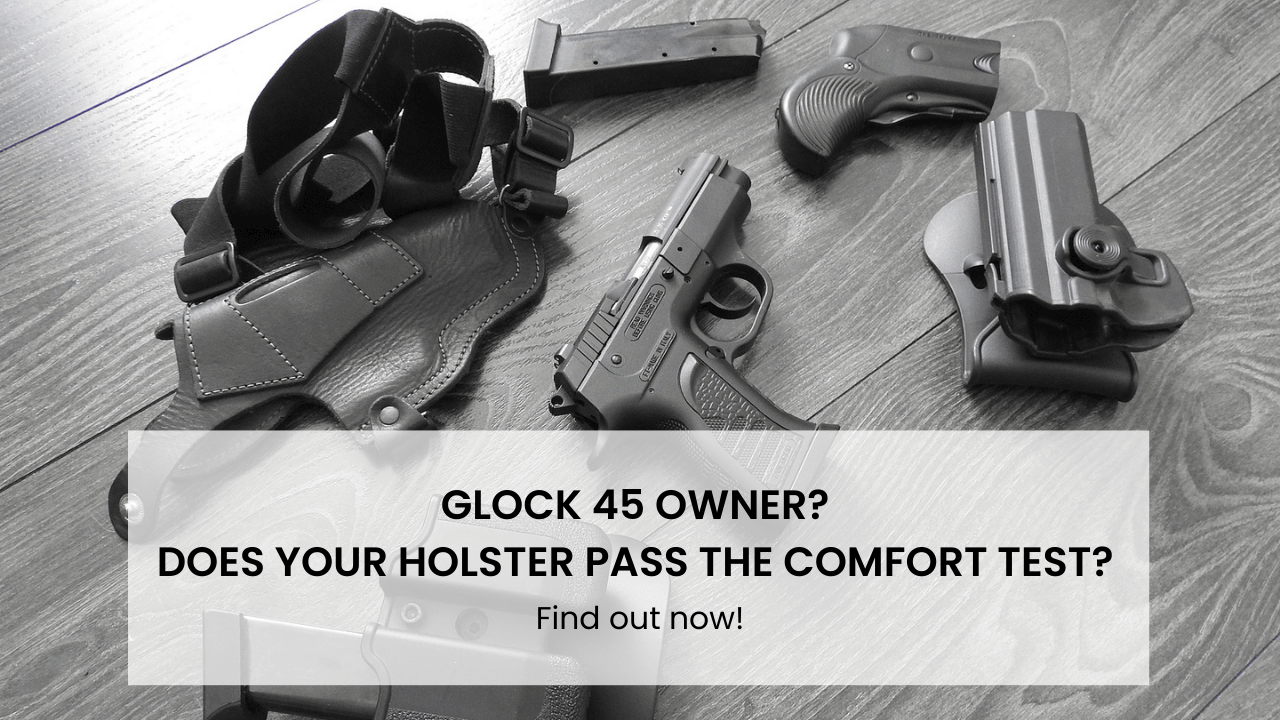Things you should Look for While Buying a Glock 26 Holster
Oct 1st 2021
First introduced in 1995, the Glock 26 is a shortened version of the Glock 19, a compact variant of the Glock 17. As the G26 is smaller than compact, Glock coined the term “subcompact” to define this pistol’s size category more accurately.
The G26 features a double-stack 10-round magazine, but it is also compatible with 15- and 17-round magazines. It is an ideal platform for concealed-carrying citizens or off-duty and plainclothes law enforcement officers.
If you’re looking for the best Glock 26 concealed carry holster, you need to consider certain features of this subcompact. Here are the features and elements you should look for before purchasing.

Carrying Styles
Before choosing a specific holster model, you must first decide which holster carry method you prefer. The three most popular choices for the Glock 26 are IWB holsters, OWB holsters, and appendix carry holsters.
All three holster types can be used for concealed carrying as long as you understand the characteristics of each holster and the advantages and drawbacks of each method. If you need a quick reminder, here’s what each carrying style is best suited for:
- Inside the waistband holsters (IWB) are ideal for maximum concealment. The shell of an IWB holster rides on the inside of your pants’ waistband, making it easy to hide with a shirt, leaving only a belt clip visible on your belt.
- Outside the waistband holsters (OWB) offer maximum comfort. Here, the shell rides on the outside of your pants, so you won’t have to deal with a gun digging into the side of your body.
- Appendix carrying inside the waistband (AIWB) is a specific IWB holster style designed for carrying in front of your body, between the 11 and 1-o’clock positions. Although it requires a dedicated holster and additional care, AIWB holsters offer concealment and comfort when worn correctly.
Holster Construction
The primary purpose of a gun holster is to safely retain your firearm when not in use, keeping it under your control and protected from loss or theft.
When browsing concealment holsters for the Glock 26, ensure its materials and overall construction meet these essential safety standards.
A quality gun holster must be made of durable materials that provide adequate retention and a high degree of safety.
Two of the most common options that meet this criteria are leather and Kydex.
Although leather is a traditional option and has been used for centuries, the relatively recent invention of the Kydex holster employs a modern thermoplastic material that is more durable, less expensive, requires less maintenance, and provides a tighter and more secure fit than leather holsters.
In addition, Kydex holsters possess a unique characteristic: They are molded to match the exact shape of a specific firearm, following the particular dimensions of your handgun’s slide, frame, and trigger guard.
While it means you’ll need one Kydex holster for each handgun you own, this construction also allows holsters made of this material to offer a tighter fit and better passive retention than leather equivalents.

Comfort and Adjustment Features
Every shooter’s body and preferences are slightly different, and sometimes, the holster as it comes out of the box is not quite right. Look for these additional features to customize your holster and adjust the fit to perfection.
Comfort features to consider
If you’re shopping for an IWB or AIWB holster, look for models that offer a sweat guard. This part protects your gun finish from exposure to sweat and body heat, preventing it from being damaged.
Appendix carry enthusiasts looking for an AIWB holster may benefit from a mod wing. This small plastic or metal element pushes back against the inside of your pants’ waistband, keeping your handgun’s grip from protruding and improving your appendix carry holster’s concealability.
Not every concealed carrier uses the same belt size. Check whether the manufacturer offers an option to swap out the belt clip for a different model that better fits your belt size. For example, if you wear a 1.75” gun belt, the standard 1.5” belt clip won’t fit; you’ll need a 1.75” model instead.
Adjustable elements
The best concealment holsters let you adjust three essential features to adapt the way it fits on your body: ride height, cant, and retention.
Ride height
Adjustable ride height lets you change the vertical position of your holster relative to your waistline. This means the gun and holster sit higher above the waistline than usual, letting you get a better grip at the cost of some concealability. Lower does the inverse; it pushes the gun deeper under the waistband, hiding it more efficiently but making it a little more challenging to grip.
Cant
Adjustable cant changes the rotational angle of your holster. Traditionally, belt holsters orient your gun barrel at the 0° position (neutral), roughly perpendicular to the ground.
A positive cant angle rotates the gun forward (the gun barrel points behind you), whereas a negative angle rotates it backward (barrel angled in front of you).
Various cant angles may suit different carry positions. For example, FBI carry combines a 4-o’clock position (behind the hip) with a 15° positive angle.
Retention
Adjustable retention refers to how tightly the shell squeezes your gun when holstered, which changes the retention effectiveness. Looser retention means the gun is easier to draw and re-holster but may increase the risk of losing your weapon if your holster ends up in an unfavorable position. Tighter retention grips your gun more, retaining it more securely but making it harder to draw and re-holster.
Carry Responsibly With Incognito Concealment
At Incognito Concealment, we aim to provide American gun owners with the best Kydex holsters on the market. We offer IWB, OWB, and AIWB models compatible with a vast selection of pistols and revolvers, all covered by our limited lifetime warranty. For more information, call us today at (586) 333-4240.
{ "@context": "https://schema.org", "@type": "BlogPosting", "mainEntityOfPage": { "@type": "WebPage", "@id": "https://www.incognitoconcealment.com/blog/things-you-should-look-for-while-buying-a-glock-26-holster" }, "headline": "Things you should Look for While Buying a Glock 26 Holster", "description": "If you’re looking for the best Glock 26 concealed carry holster, learn the features and elements you should consider before purchasing.", "image": "https://www.incognitoconcealment.com/product_images/uploaded_images/unnamed.png", "author": { "@type": "Organization", "name": "" }, "publisher": { "@type": "Organization", "name": "", "logo": { "@type": "ImageObject", "url": "" } }, "datePublished": "2021-10-01" }











